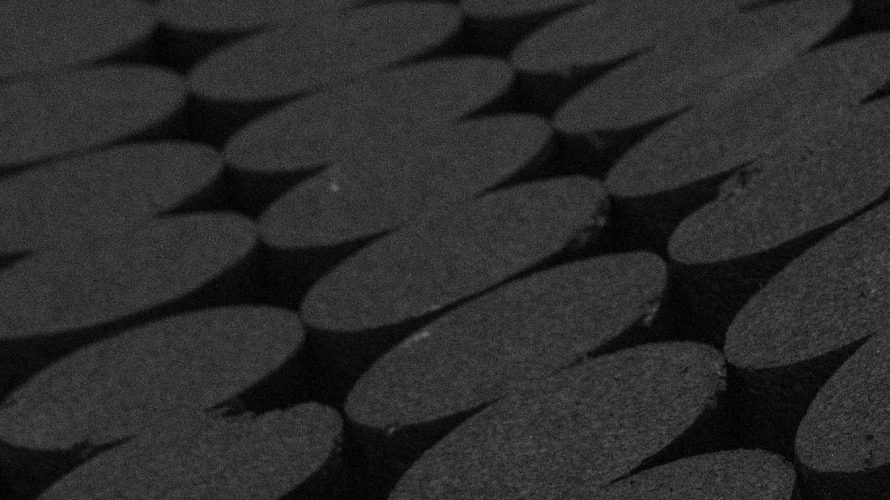Plastic Container Drop Simulation with Realistic loads
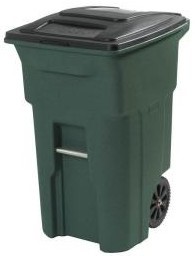 Plastic containers are common sight in day-to-day life. These containers typically come with the manufacturer’s warranty of at least 10 years. These outdoor containers experience harsh weather conditions in winter.
Plastic containers are common sight in day-to-day life. These containers typically come with the manufacturer’s warranty of at least 10 years. These outdoor containers experience harsh weather conditions in winter.
Made of polymer material, which is ductile in nature, their behaviour is subject to change in extreme cold conditions to more hardened and brittle. With high warranty life, it is crucial for the manufacturers to consider different aspects such as operating conditions in terms of weather, abusive loads and usage while designing these containers. It is highly crucial for them to conduct physical drop tests on these containers under above conditions to be confident on its performance.
Similar to any other engineered products these containers have to undergo multiple design changes and physical validations before being rolled out for production.
The aim of this blog is to show case how finite element simulation can help in virtually drop testing these products under realistic loads and conditions. This can help manufacturers to come up with good designs in a short span of time reducing design cycle time, reducing physical prototyping, and testing as well as being confident on product performance in the field.
Abaqus product suite from Dassault Systèmes is an efficient tool for transient dynamic procedure that is required for drop simulations to generate more realistic loads. To demonstrate the capability, we have used a simple outdoor trash container model with non-linear material properties and realistic loading to simulate the drop and the results are presented here.
The Finite Element Model of The Plastic Container
The scenario we are modelling here is that the container is dropped from a height of 12 feet with 90 kg of loads inside the container. The model of the container is meshed using shell elements. The container is made of polymer material. The material properties taken here is a typical elastic-plastic material data tested at cold condition of -25°C. This would ensure that the model is tested under severe weather conditions. The container is assumed to be dropped on a rigid floor.
The container is tested for two different conditions (two different analyses), one filled with water and the other one filled with soil. Both soil and water are modelled in Eulerian domain to capture the behaviour of the materials as well as the transfer of loads to the container accurately.
The coupled Eulerian-Lagrangian (CEL) capability available in Abaqus/Explicit is used for soil/water to container interaction. General contact in Abaqus/Explicit would ensure the interaction is captured and loads are transferred.
The material model chosen for both soil and water are the equation of state (EOS) model available in Abaqus and appropriate physical behaviour of the materials is provided. Care has been given in choosing the viscosity and wave speed of both the materials. These are inputs required for EOS material model.
Shown below is the container assembly FEA model with wheels and rigid surface. The solid wheels are also made of polymer material and are connected to the container using rigid beam connectors. The second picture shows the Eulerian mesh around the can.
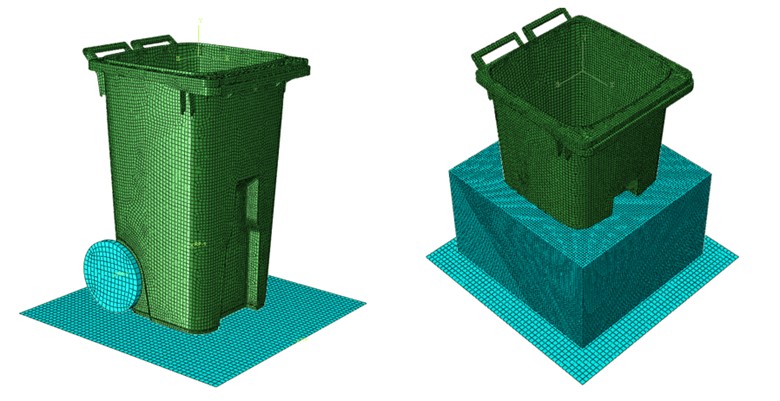 The container is assumed to free-fall from a height of 12 ft. to reduce the unnecessary computational time, the container is moved closer to the rigid floor and the accumulated velocity from the drop is calculated and given as initial velocity to the whole model. Further gravity load is also defined to the whole model. The floor is fixed.
The container is assumed to free-fall from a height of 12 ft. to reduce the unnecessary computational time, the container is moved closer to the rigid floor and the accumulated velocity from the drop is calculated and given as initial velocity to the whole model. Further gravity load is also defined to the whole model. The floor is fixed.
The Plastic Container Drop Results
Shown below is the animation of deformation on the container filled with soil. The animation also shows the soil displacement on the right.
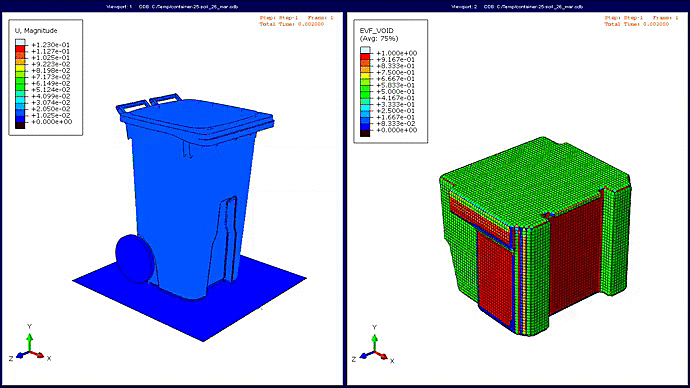
The following animation is a deformation of a container filled with water displacement on the right.

It can be clearly noted here that both filler materials behave differently due to their density, viscosity, etc. Because of this, there are differences in the way loads are transferred to the structure. It is important to simulate with right conditions, and physical phenomena to capture the right behaviour of the products tested.
Abaqus with CEL technique can model interaction between fluid and structure accurately.
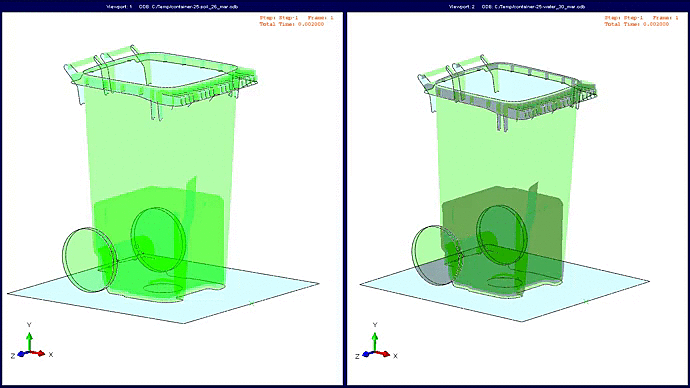
The simulation can be used to find the potential crack initiation zones in the container with the zones having high plastic strains. It can be noted from the pictures below that the hotspots are different for soil and water.
The picture to the left shows for soil, while water is on the right. Further, it is understandable that the container filled with soil having more hotspots compared to the one with water since soil is denser than water and consequently more load transferred to the container.
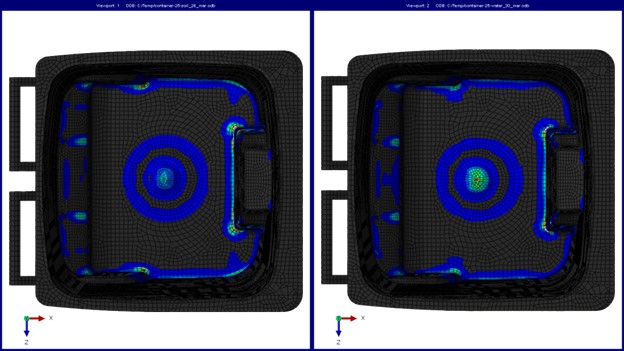
The following picture shows high strains at a location slightly lower for the soil than for water. This could be due to highly dense and vicious nature of the soil tending to stay low.
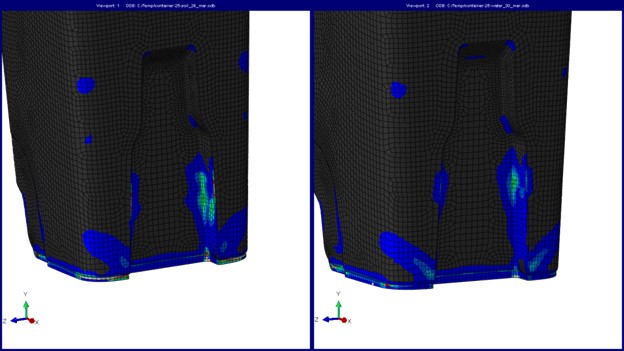
Abaqus Capabilities for Container Drop Test
As a concluding remark, Simulia Abaqus product suite can be effectively used to simulate the drop test of the container with realistic loads e.g., soil and water. This simulation can give deep insight into the behaviour of the container with potential hotspots for crack initiation, allowing the engineers to make necessary design changes for a safer design without going through the tedious and time-consuming physical tests.
This drop simulation could be part of a routine design process to optimize the geometry before manufacturing the (expensive) mould. It is also possible to simulate successive drops to evaluate the cumulative damage of numerous events.
Finally, additional capabilities of Abaqus such as Discrete Element Method (DEM) can also be used to simulate the drop test of a container in cases where solid parts such as wooden pieces or rocks are to be considered in the container.
References
- Coupled Fluid / Structure Interaction Simulation Using Abaqus CEL, GM Fuel CAE, SIMULIA Community Conference, May 2010
- Section: 2.3.2 Impact of a water-filled bottle, Abaqus Example Problems Manual, Abaqus Documentation 6.14
- Section: 14.1.1 Eulerian analysis, Abaqus Analysis User’s Manual, Abaqus Documentation 6.14
